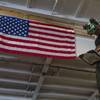Incat Australia Pty. Ltd. is widely regarded as a premier builder of high-speed ferries, and that reputation was enhanced with the production of three wave-piercer catamarans, which hold the distinction of being the fastest ships ever to cross the Atlantic. The two latest, Catalonia and Cat-link V, are from Incat's line of 299 ft. wave-piercer class of fast-ferry vessels. They made their individual record-breaking journeys across the Atlantic within weeks of each other, at average speeds of 39 knots and 41 knots, respectively.
The wave-piercer fast-ferry vessels have been launched from Incat docks in Hobart, Tasmania, Australia, since September 1997. The high-tech ferry evolved from the successful computer-aided-design (CAD) development of a series of car ferries including 243, 256, 266 and 282 ft. vessel ranges. An efficient assembly line, and a reputation for speed and great safety, has given Incat a sizable piece of the world's ferry market - almost 40 percent of the world's high-speed car ferries have been built by Incat over the last eight years.
TT-Line introduced the 299 ft. wave-piercing class of ferry catamarans by initiating a four-month charter of Devil Cat across Australia's Bass Strait, between George Town, Tasmania and Port Melbourne, Victoria. This route is 227 nm, the longest non-stop open-sea fast ferry route in the world. Devil Cat crossed the route regularly in less than six hours. The 315 ft. class ships carry 900 passengers and crew, as well as up to 240 cars.
In April, Devil Cat sailed to Canada to operate 14 hours a day during summers between Bar Harbor, Maine and Yarmouth, Nova Scotia, and its name has been changed to The Cat. It has been very successful on its new route. TT-Line secured a larger 315 ft. wave-piercer in its place to run the Bass Strait route in the 1998-1999 season.
The wave-piercing Incat catamaran design was first developed in the early 1980s, and has undergone 15 years of refinement. Each of the slender, twin hulls is divided into eight watertight compartments, and the shape allows the hulls to pierce the waves rather than ride over them, giving the vessel exceptional rough sea performance.
The hulls are typically 10 percent immersed at the bow, with 10 percent reserve buoyancy. The remaining 80 percent reserve buoyancy is held in the forward central hull, located above the loaded water line. These ratios maintain the vessels' stability all types of weather conditions and sea angles.
The hull form for the 299 ft. ferries is a full redesign of the Incat catamaran design in CADKEY mechanical CAD software (Baystate Technologies, Inc., Marlborough, Mass.) The 299 ft. class of ships had interesting and challenging design parameters that required generous use of the software's 3-D modeling features.
Four massive water jets speed the ferry along the waves - each one pumping 19.8 tons of water per second. To meet with new regulations requiring the bridge to have a 360-degree view, the full-width wheelhouse has been moved forward from the smaller-class ferry designs. The wheelhouse is fitted with central and wing control positions for docking facilitation.
Passenger comfort is, naturally, paramount to a vessel of this nature's success, and according to the builders, these ships are built for speed and comfort. Incat then enhanced the "total passenger experience" by including two sheltered sundeck areas behind the wheelhouse. These offer an expansive view of the horizon and a good look inside the wheelhouse.
The interior design of the 299 ft. ships is provided by Incat's In-house Design Group (IDG), and their mandate is to maximize onboard revenue potential while still retaining the unique style and comfort for passengers, keeping in mind the ships will be used on long open-seas routes.
Sponsored Content
Lower carbon intensity fuels to support your operations

Subscribe for
Maritime Reporter E-News
Maritime Reporter E-News is the maritime industry's largest circulation and most authoritative ENews Service, delivered to your Email five times per week










